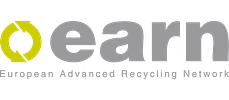WEEE: Waste electrical and electronic equipment
WEEE – what does it stand for?
Waste means any substance or object which the holder wants to dispose of or is required to dispose of pursuant to the provisions of national law in force. Waste is also colloquially referred to as scrap, trash, garbage, rubbish, junk and other terms.
Electrical and Electronic Equipment or EEE according to the WEEE Directive 2012/19/EU means equipment which is dependent on electric currents or electromagnetic fields in order to work properly and equipment for the generation, transfer and measurement of such currents and fields and designed for use with a voltage rating not exceeding 1 000 volts for alternating current and 1 500 volts for direct current.
Waste Electrical and Electronic Equipment or WEEE as per definition in the WEEE Directive 2012/19/EU means electrical or electronic equipment which is waste within the meaning of Article 3(1) of Directive 2008/98/EC, including all components, sub-assemblies and consumables which are part of the product at the time of discarding.
Waste Electrical and Electronic Equipment (WEEE) classified into 6 categories:
- Temperature exchange equipment
- Screens, monitors and equipment containing screens having a surface greater than 100 cm2
- Lamps
- Large equipment (minimum one external dimension greater than 50 cm)
- Small equipment (no external dimension greater than 50 cm)
- Small IT and telecommunications equipment.
Annex IV of the WEEE Directive 2012/19/EU contains a non-exhaustive list of EEE which falls within the 6 categories.
WEEE B2B
WEEE B2B “Business to Business” means WEEE which comes from commercial, industrial, institutional and other sources but not from private households. EEE designed for professional use only and which cannot be used by private households like medical equipment, industrial machines, large printing equipment, servers, etc. is allocated as B2B EEE or when it became waste as B2B WEEE.
WEEE B2C
WEEE B2C “Business to Customer” means WEEE which comes from private households and WEEE which comes from commercial, industrial, institutional and other sources which, because of its nature and quantity, could possibly be used in private households. Waste from EEE likely to be used by both private households and users other than private households, shall in any event be considered to be WEEE from private households.
Labelling
The symbol adopted by the European Council to represent waste electrical and electronic equipment comprises a crossed-out wheelie bin with or without a single black line underneath the symbol. Devices placed on the market after August 13th, 2005 need to be labelled either with the date they were placed on the market or with the single black line underneath the the crossed-out wheelie bin.

In addition electrical and electronic equipment needs to be labelled with information identifying the producer.








